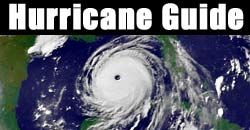Surprise New Technique Improves Hurricane Tracking

Hurricanes are like giant mixers. The colossal storms suck air and moisture inward at the surface and, when they really get going, pump it out a natural chimney several miles high.
Scientists struggle to see exactly what's going on inside a developing storm, and that imperfect view is partly to blame for less-than-perfect forecasts.
A new study tracked the movement of ozone through a dozen hurricanes, revealing that the chemical can provide better indications of whether a hurricane will form and where it is going.
The research was announced today, one week into what experts expect will be a busy hurricane season.
The mixer
Ozone is a naturally occurring substance at high altitudes. It blocks harmful ultraviolet radiation from the Sun, making life as we know it on Earth possible. Industrial pollution produces ground-level ozone that is harmful when inhaled.
Nature's protective ozone is constantly lost and regenerated by chemical processes at high altitudes. Most ozone exists in a layer in the stratosphere from about 10 to 30 miles (15-50 kilometers) up. Another 10 percent or so of the natural ozone dips into the troposphere, which runs from Earth's surface up to stratosphere.
Sign up for the Live Science daily newsletter now
Get the world’s most fascinating discoveries delivered straight to your inbox.
The boundary between the two air layers is called the tropopause, and that's where ozone varies the most, explains Florida State University researcher Yonghui Wu.
"When the hurricane is formed, the deep convection near the eyewall is very strong, and can reach to the lower stratosphere," Wu said. "It brings the lower troposphere air upward, and replaces the ozone rich atmosphere there, which results in the reduction of total ozone in that region."
Meanwhile, air tends to fall downward in the eye of a hurricane, bringing ozone-rich air into the lower troposphere and increasing the amount of ozone in the hurricane's core.
The result, Wu told LiveScience, is "a local maximum of total ozone in the core of hurricane, and a ring of low level of total ozone surrounding the hurricane."
Here's the upshot: Satellite tracking of ozone reveals the hurricane's eye very distinctly.
Life and death
Wu and colleague Xiaolei Zou analyzed 12 hurricanes. On average, the eye's location was 18 miles different as measured by the ozone data compared to official locations issued by the National Hurricane Center.
Eighteen miles can easily mean the difference between life and death in a powerful storm.
Ozone tracking "greatly improved the predicted track that the hurricane would take," the scientists write. Further, the ozone data provide a clue to storm development earlier than other monitoring methods.
A hurricane starts as a tropical disturbance that spins weakly. Cloud cover often masks the activity, so satellites peering with optical and infrared cameras can't see what's going on. An ozone-monitor sees inside a nascent storm.
The observations were made with NASA's Total Ozone Mapping Spectrometer (TOMS) satellite. The study, funded by NASA, is detailed in Journal of Geophysical Research paper.

The science of monster storms.
Busy 2005 Season Predicted The official season forecast from the National Hurricane Center.
The Deadly 2004 Season Officials say lessons learned will save lives in the future.
Rare One-Two Punch A pair of tropical storms are imaged at once.
Related Stories
Billion Dollar Weather Disasters Nature's Wrath: Global Deaths and Costs Swell Global Disaster Hotspots: Who Gets Pummeled
Earth's Atmosphere
Gravity holds gases near to the Earth to create the atmosphere, its volume composed 78 percent of nitrogen, 21 percent of oxygen, and 1 percent of argon, plus an abundance of other gases in smaller amounts.
The exosphere extends up about 1,500 miles (more than three times the height of this chart). It has minimal air and constantly loses molecules to outer space.
It's hottest in the thermosphere, exceeding 3,600 degrees. In the mesosphere, temperatures plummet to more than 100 degrees below zero.
The stratosphere is warmer but still below freezing. The thinnest layer, the troposphere, holds about 90 percent of all the gases, sustaining life and producing weather.
Water vapor in the atmosphere ranges from zero to about 4 percent.
Robert is an independent health and science journalist and writer based in Phoenix, Arizona. He is a former editor-in-chief of Live Science with over 20 years of experience as a reporter and editor. He has worked on websites such as Space.com and Tom's Guide, and is a contributor on Medium, covering how we age and how to optimize the mind and body through time. He has a journalism degree from Humboldt State University in California.













